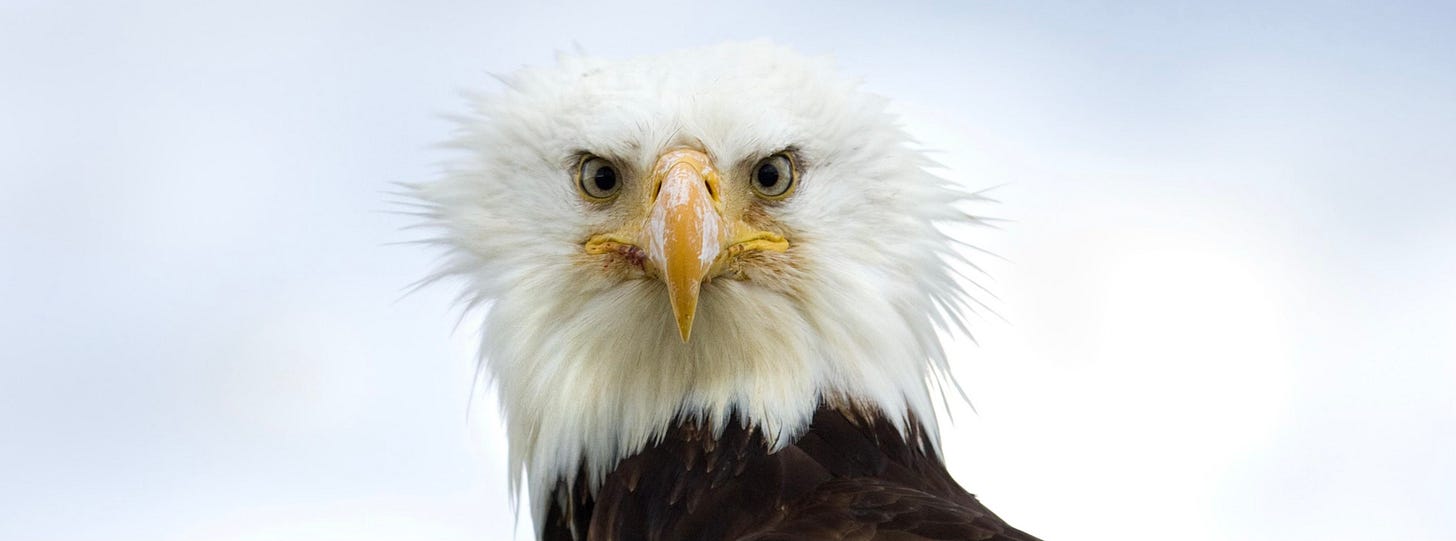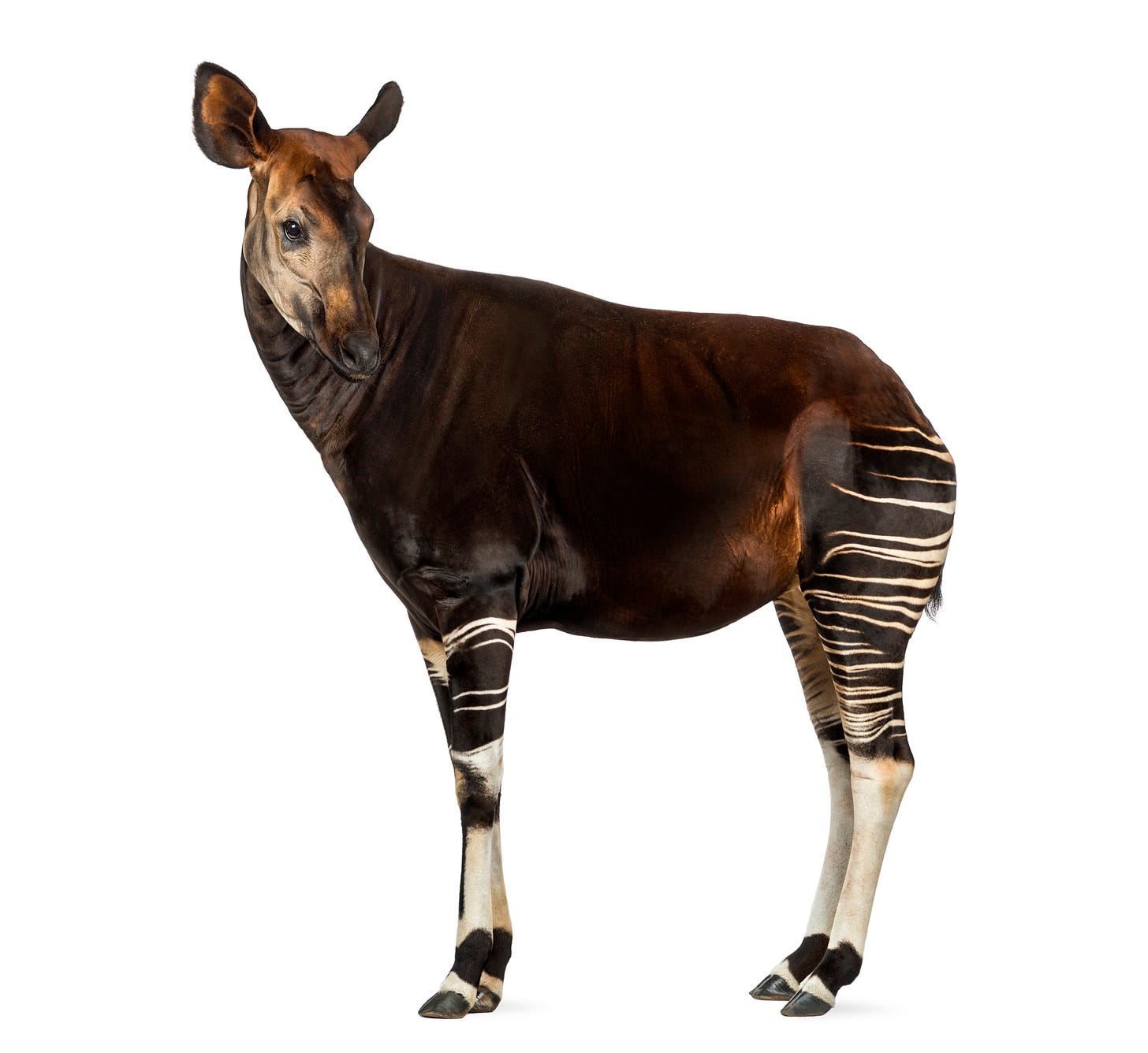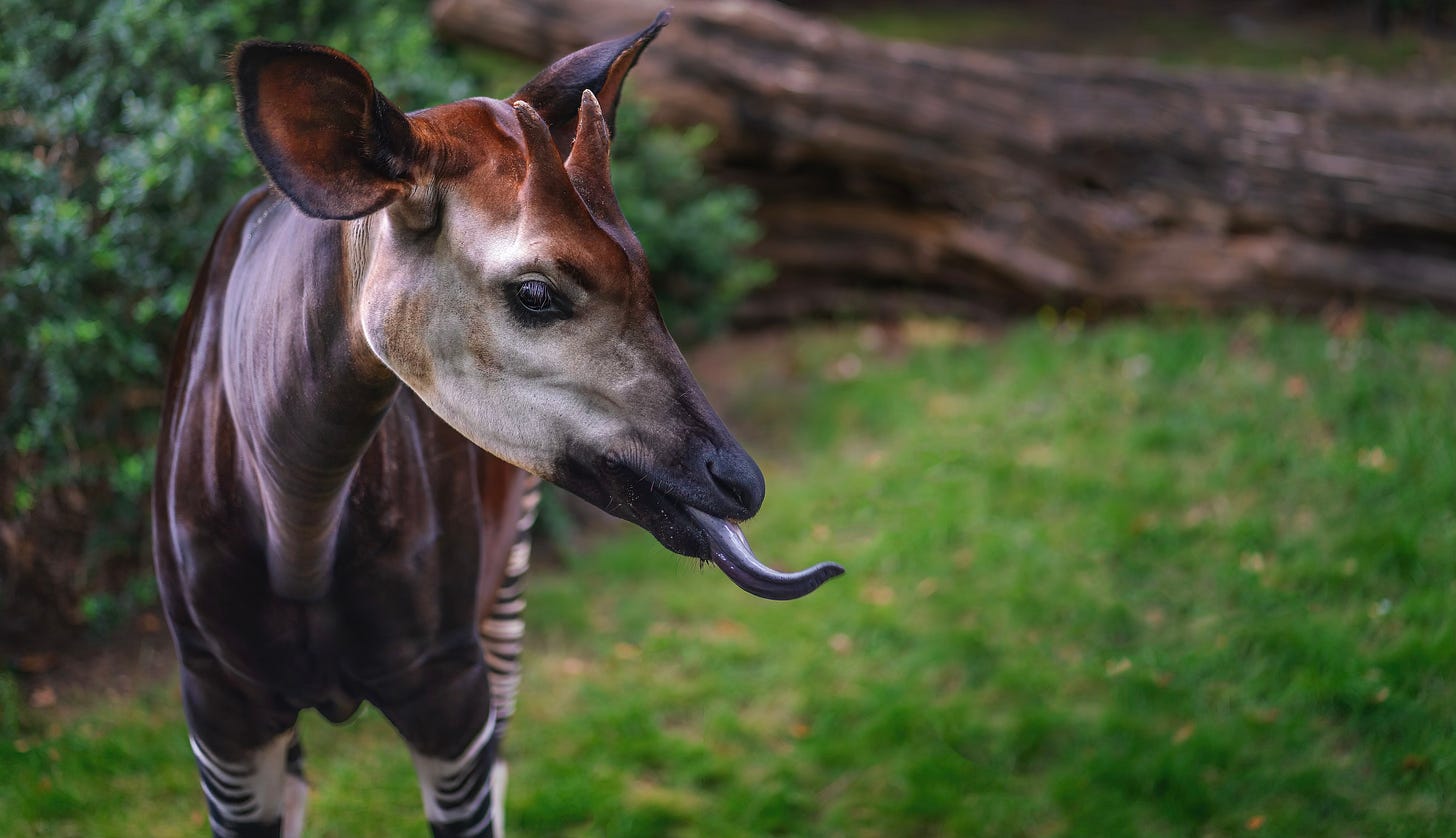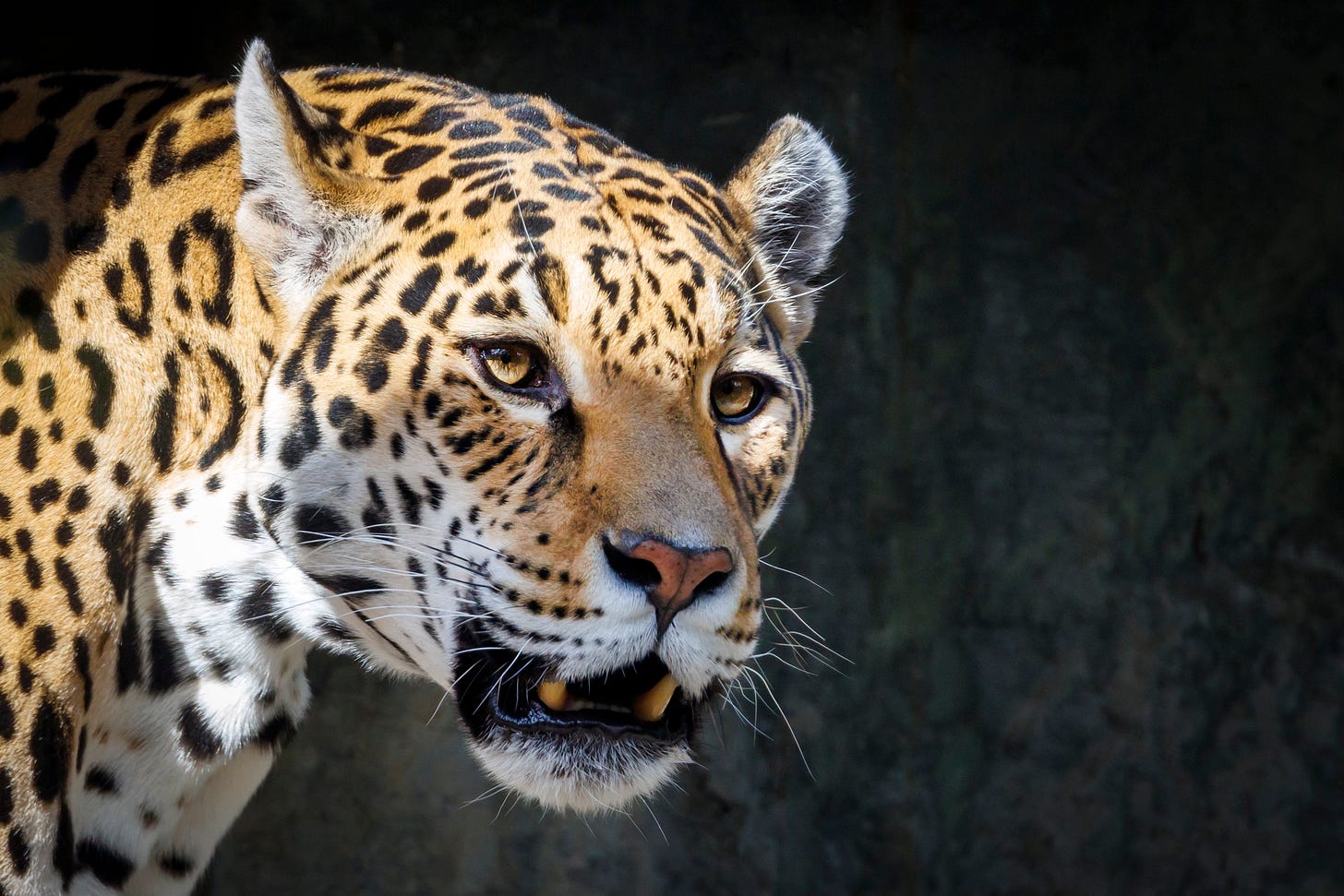The rainforest's best-kept secret has stripes
Plus, paying ranchers for photographs rather than jaguar kills
By Dan Fletcher
Here is today’s audio edition!
First off, a sincere thank you — across this newsletter, TikTok and through your shares, I can see we delivered several hundred comments on the proposed changes to the Endangered Species Act.
What happens from here? With the public comment period now closed, we wait and see. Though the public outcry was loud and vociferous — not just from us, but from all across the animal-loving web — there’s sadly no guarantee that the administration has to account for the weight of public sentiment in its final decision. It’s advisory; not binding.
So I’ll keep you posted whether harm ends up getting redefined in the act. And more importantly, lawyers are paying attention too. Organizations like the Center for Biological Diversity have already said they’ll issue a day one challenge if the regulation actually changes, and they think they have a path to success in the courts — especially since the Supreme Court has previously accepted that harming an endangered species extends to harming its habitat, too.
Fingers crossed that public opinion or the court system put a block on this horrible change.
Now onto happier news — let’s meet the okapi.
The forest giraffe that almost never was
I somehow missed the memo about the okapi. The first time I saw one at the Denver Zoo, I stood there puzzled — was this some bizarre zebra-horse hybrid? A deer with identity issues? The animal has the face of a giraffe, the body of an antelope, and the striped hindquarters of a zebra, all wrapped in a velvety chocolate-brown coat.
But my surreal first encounter mimics how the Western world originally discovered the okapi. For centuries, this creature remained so elusive that it was known as the "African unicorn" — a mysterious animal rumored to exist deep in the Congolese rainforest but never actually seen by outsiders. It wasn't until 1901 that the okapi was officially described to science, making it one of the last large mammals to be "discovered."
Even today, spotting an okapi in the wild remains a near-mythical achievement. These secretive animals live exclusively in the dense rainforests of the Democratic Republic of Congo, where they've perfected the art of disappearing. Their distinctive striped legs — which initially confused explorers into thinking they'd found some forest-dwelling zebra — serve as natural camouflage, breaking up their outline in the dappled forest light.
But what makes the okapi unique isn't just its patchwork appearance — it's actually the only living relative of the giraffe. Despite lacking the iconic long neck (though theirs is still noticeably elongated compared to other forest dwellers), okapis share many giraffe-like features: the same distinctive facial structure, a long tongue that can reach up to 14 inches (used not just for plucking leaves but also for cleaning their own eyes and ears), and small horn-like protuberances called ossicones.
I started researching okapis after seeing more dire headlines about their future. Like many Central African species, the okapi faces substantial threats — poaching, habitat loss from logging and mining, and the spillover effects from armed conflicts that have plagued eastern DRC for decades. In 2013, the species was uplisted to Endangered on the IUCN Red List after researchers documented a population decline of more than 50%.
That's the kind of news that feels sadly familiar here. But diving deeper into the okapi's story, I found surprising bright spots amid the darkness.
For one, unlike many endangered species whose populations are scattered across multiple countries with conflicting priorities, the okapi benefits from being endemic to a single nation. This has allowed the DRC to make the animal a point of national pride — it appears on Congolese currency, and conservation efforts can be streamlined under one government's approach.
The creation of the Okapi Wildlife Reserve in 1992 proved a critical turning point. This UNESCO World Heritage Site protects nearly 14,000 square kilometers of the Ituri Forest, serving as a stronghold for an estimated 3,000 okapis. Despite setbacks — including a devastating 2012 militia attack on the reserve's headquarters that killed rangers and 14 captive okapis — the reserve has steadily rebuilt its security and effectiveness.
Perhaps most exciting was the unexpected discovery in the 2010s that okapis lived in forests south of the Congo River, well beyond their presumed range. Scientists using innovative DNA analysis of dung samples confirmed okapi presence in what's now Lomami National Park, established in 2016 as DRC's first new national park in over 40 years.
The creation of Lomami represents exactly the kind of success story I love to highlight — not just because it expanded protected okapi habitat, but because of how it happened. Local communities were actively engaged in demarcating the park boundaries, creating a participatory model that moved beyond the outdated "fortress conservation" approach. When people living near wildlife have a stake in its protection, conservation becomes sustainable.
Zoos have played a crucial role too. The global captive population of around 180-200 okapis serves as an insurance policy against extinction, maintained through careful genetic management. But zoos don't just breed okapis — they fund field conservation. After the 2012 attack on the Okapi Wildlife Reserve, zoos worldwide held emergency fundraisers to rebuild facilities and enhance ranger safety gear.
Even the okapi's natural adaptations give cause for hope. They're remarkably resilient forest specialists, with oily water-repellent fur that acts like a built-in raincoat. Their calves don't defecate for the first 4-8 weeks of life to avoid leaving scent trails for predators — an extreme form of scent camouflage during their most vulnerable period. And researchers have discovered that okapis communicate using infrasound, allowing them to "talk" to each other over distance while remaining inaudible to predators.
These survival traits have helped okapis persist through millennia of challenges. With continued protection and smart conservation strategies, they may navigate the human-dominated threats of our era too.
The okapi's story is a good example of why I started FUZZ in the first place — to highlight the animals that captivate our imagination and the people working tirelessly to protect them. In the okapi's case, those efforts include indigenous Mbuti and Efe peoples of the Ituri Forest, who have traditional reverence for the animal; conservation scientists developing non-invasive monitoring techniques; and rangers who patrol remote forests despite significant personal risk.
When I look at an okapi now, I no longer see just a bizarre patchwork of animal parts. I see an evolutionary marvel that has survived for millions of years, a living link to ancient forests, and a rallying point for conservation that bridges local communities, national pride, and international cooperation.
Quick link! 🔗
Jaguars are making a quiet comeback in northern Mexico, thanks to an innovative conservation approach that pays ranchers for cat photos instead of kills. The "Viviendo con Felinos" program rewards farmers with up to $260 every time their trail cameras capture a jaguar, effectively making living cats more valuable than dead ones. What started as a financial incentive has evolved into a cultural shift — even Agustín Hurtado, former president of Sonora's livestock association, transformed from someone who "hated felines" to a proud jaguar admirer with cat photos as his phone wallpaper. The program has effectively doubled the protected area beyond the Northern Jaguar Reserve's boundaries, creating crucial habitat that could eventually allow more jaguars to make their way north into the American Southwest, where the big cats once roamed before being hunted to local extinction. Awesome reporting and photos by Vox.









So interesting, I’m never going to look at okapi the same way!